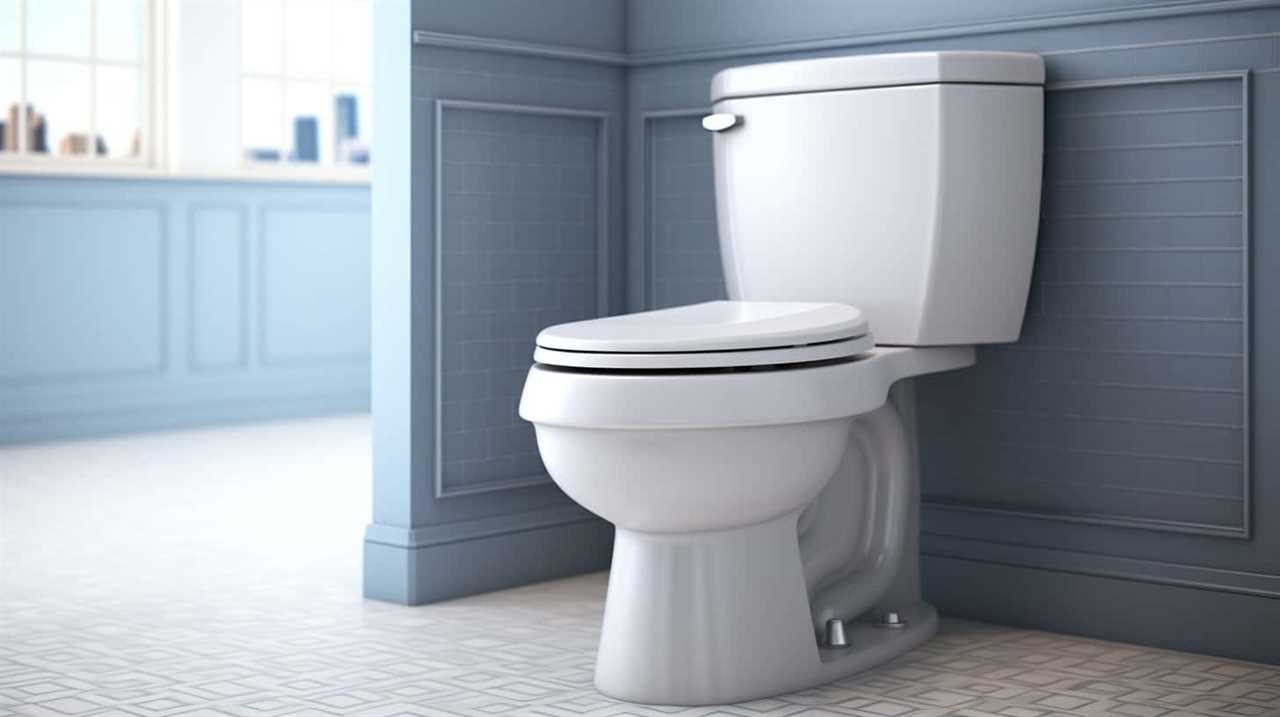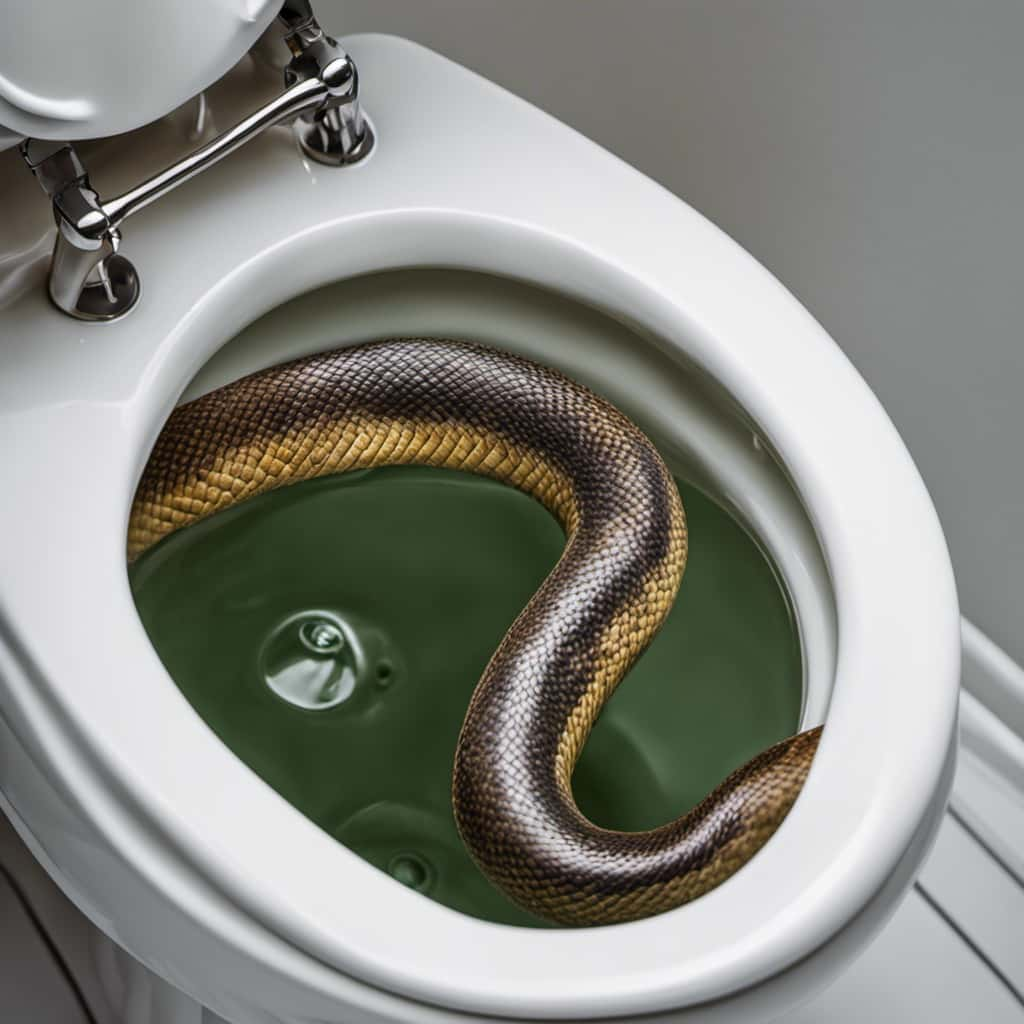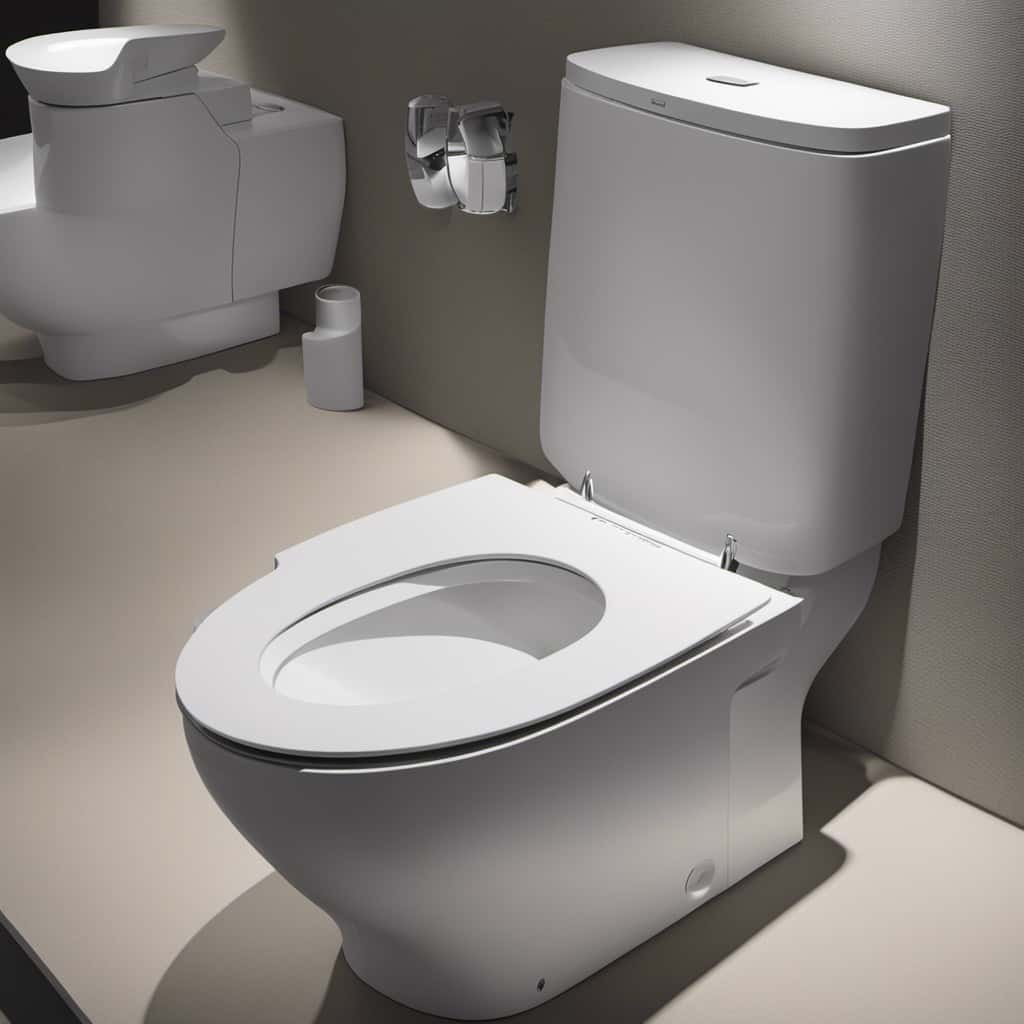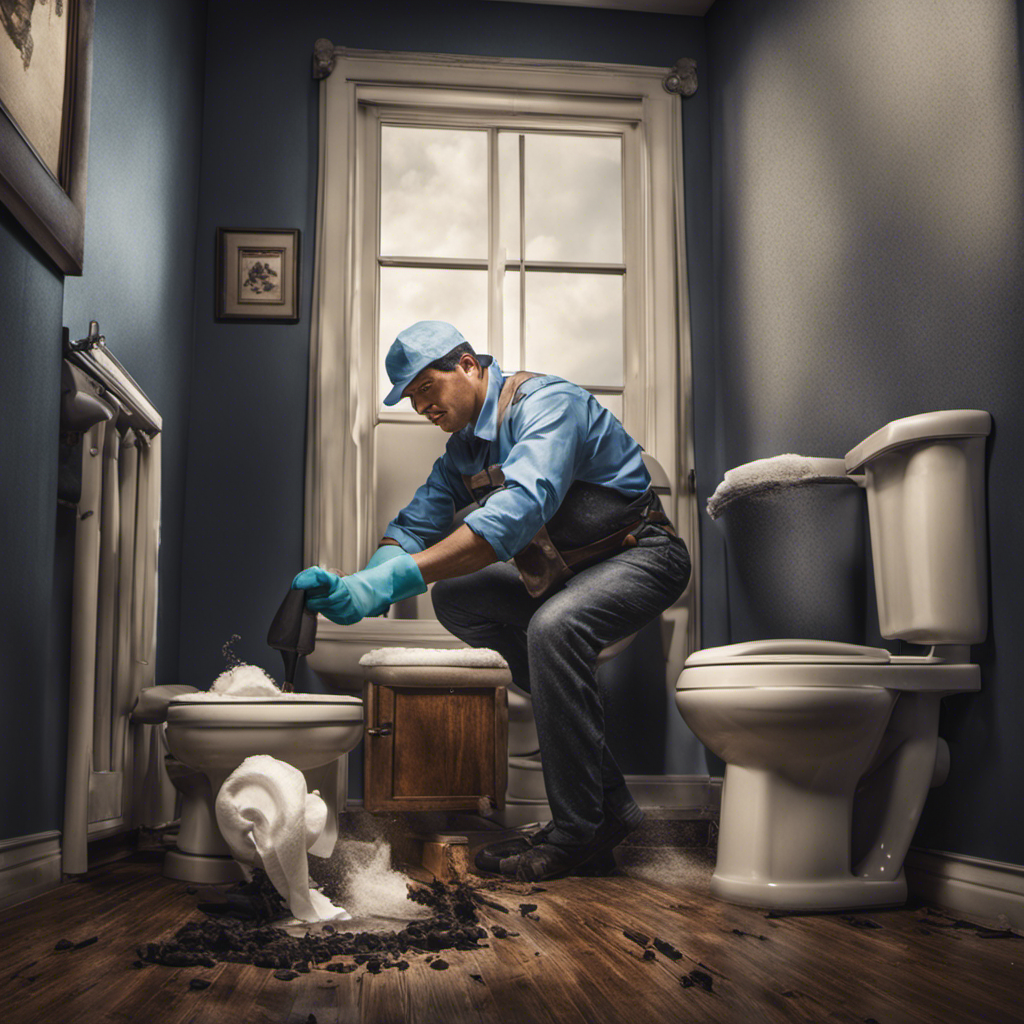Ever been frustrated by a toilet that won’t stop running, leading to wasted water and higher bills? Many of us have faced this situation. Often, the problem lies with a defective flapper valve.
In this article, we will delve into the world of flapper valves, exploring their anatomy, functionality, and common signs of malfunction. We will also provide step-by-step instructions on how to replace a flapper valve and discuss different types available.
By mastering the knowledge of flapper valves, you can ensure a properly functioning toilet and avoid unnecessary expenses.
Key Takeaways
- A flapper valve is a circular piece made of flexible materials like rubber or silicone, attached to the flush lever by a chain or rod, and positioned over the flush valve opening at the bottom of the toilet tank.
- It is lifted by the flush lever to allow water flow into the bowl and falls back into place to seal the flush valve opening and prevent continuous water flow.
- Signs of a faulty flapper valve include constant water leaks from the tank into the bowl, weak or incomplete flush, toilet keeps running even after flushing, continuous sound of running water, water stains around the base of the toilet, and high water bills.
- To address water leaks and improve flush efficiency, regular maintenance, inspection, and troubleshooting of the flapper valve are crucial. Additionally, adjusting the water level in the tank can optimize flush performance.
Anatomy of a Flapper Valve
To understand the functioning of a flapper valve in a toilet, let’s delve into the intricate anatomy of this essential component.

The flapper valve is a circular piece made of flexible materials such as rubber or silicone. It’s attached to the flush lever by a chain or rod.
The valve is positioned over the flush valve opening, which is located at the bottom of the toilet tank. When the flush lever is pressed, it lifts the flapper valve, allowing water to flow from the tank into the bowl, initiating the flush.
Once the tank is emptied, the flapper valve falls back into place, sealing the flush valve opening and preventing water from continuously flowing.
Understanding the anatomy of the flapper valve is crucial to comprehend how it works in the overall mechanism of a toilet.

How Does a Flapper Valve Work
Exploring the inner workings of a flapper valve in a toilet, we observe its functioning through the interplay of various components in the flushing mechanism. The flapper valve mechanism consists of four key elements:
- Flapper: The rubber or plastic disc that covers the flush valve opening. It lifts up when the toilet is flushed, allowing water to flow from the tank into the bowl.
- Chain: Connected to the flapper, the chain lifts the flapper when the toilet handle is pressed.
Sub-list 1: Emotional response evoked: Curiosity
- Delving into the intricate design of a flapper valve mechanism, one can’t help but marvel at the engineering behind this simple yet effective device.
- Flush lever: When pressed, it lifts the chain connected to the flapper, initiating the flushing process.
- Float ball or cup: Regulates the water level in the tank, ensuring the flapper valve closes properly after flushing.
Sub-list 2: Emotional response evoked: Satisfaction
- Mastering the troubleshooting of a flapper valve empowers one to maintain a well-functioning toilet system, eliminating potential issues and ensuring a smooth and efficient flush every time.
Understanding the inner workings of a flapper valve mechanism and troubleshooting common problems can help you maintain a properly functioning toilet.

Common Signs of a Faulty Flapper Valve
We can identify a faulty flapper valve in a toilet through several common signs.
Firstly, if water leaks constantly from the tank into the bowl, it’s a clear indication of a problem with the flapper valve.
Secondly, a weak or incomplete flush can also be attributed to a faulty flapper valve.
Lastly, if the toilet keeps running even after flushing, it’s likely due to a malfunctioning flapper valve.

Water Leaks Constantly
Our toilets often experience constant water leaks, which are typically caused by a faulty flapper valve. This not only leads to wastage of water but also requires immediate attention for toilet repair. Signs of a faulty flapper valve include:
- Continuous water flow: If you hear the sound of running water even when the toilet isn’t in use, it indicates a leaky flapper valve.
- Water stains: If you notice water stains around the base of your toilet, it could be a sign of a faulty flapper valve causing water to continuously seep out.
- High water bills: A faulty flapper valve can lead to significant water wastage, resulting in unexpectedly high water bills.
Addressing these issues is crucial for water conservation and ensuring the efficient functioning of your toilet. Contacting a professional for toilet repair will help in resolving the faulty flapper valve and preventing further water leaks.
Weak or Incomplete Flush
One common sign of a faulty flapper valve in a toilet is experiencing a weak or incomplete flush. When the flapper valve isn’t functioning properly, it may not open fully or close tightly, leading to a weak flow of water during flushing. This can result in waste not being effectively removed from the bowl, causing the toilet to clog frequently.
To improve flush efficiency and prevent weak or incomplete flushes, regular toilet maintenance is essential. Inspecting the flapper valve for any signs of wear or damage is crucial. If the flapper valve is worn out or not sealing properly, it should be replaced immediately.

Additionally, ensuring that the water level in the tank is set at the appropriate height can also help optimize flush performance. By addressing these issues, you can maintain a functional and efficient toilet system.
Toilet Keeps Running
A common sign of a faulty flapper valve in a toilet is when it causes the toilet to keep running even after flushing. This can be frustrating and wasteful, as it can lead to increased water usage and higher utility bills.
Here are some troubleshooting tips for toilet repair to help you address this issue:
- Check the flapper valve: Ensure that the flapper valve is properly seated and not worn out or damaged. If it is, it may not create a proper seal, causing water to continuously flow into the toilet bowl.
- Adjust the chain: If the chain connecting the flapper valve to the flush handle is too long or too short, it can prevent the flapper valve from closing properly. Adjust the chain length so that it allows the flapper valve to fully close after flushing.
Steps to Replace a Flapper Valve
To begin replacing a flapper valve in a toilet, we need to start by turning off the water supply. This is a crucial step to ensure that no water flows into the toilet tank while performing the replacement. After turning off the water supply valve, we can proceed with the following steps:

- Remove the toilet tank lid and place it in a safe area.
- Drain the toilet tank by flushing it and holding down the flush handle until all the water is gone.
- Identify the flapper valve, which is usually located at the bottom of the tank.
- Disconnect the chain or strap that connects the flapper valve to the flush handle.
- Remove the old flapper valve by unhooking it from the overflow tube.
- Install the new flapper valve by attaching it to the overflow tube and reconnecting the chain or strap.
- Turn on the water supply and test the toilet for proper functioning.
Different Types of Flapper Valves
Let’s now explore the different types of flapper valves available for toilets.
Understanding the pros and cons of each option will help us make an informed decision.
Which valve is the best choice for your toilet will depend on factors such as water pressure, toilet model, and personal preference.
Pros and Cons
When it comes to flapper valves in toilets, there are various types to consider, each with its own set of pros and cons. Proper toilet repairs and flapper valve maintenance are essential for maintaining the efficient functioning of your toilet.

Here are the different types of flapper valves and their advantages and disadvantages:
- Rubber Flapper Valve
- Pros:
- Affordable and readily available.
- Easy to install and replace.
- Cons:
- Can deteriorate over time, requiring frequent replacements.
- Prone to warping or getting stuck, leading to leaks and water wastage.
- Silicone Flapper Valve
- Pros:
- Durable and long-lasting.
- Resistant to chemicals and corrosion.
- Cons:
- More expensive than rubber flapper valves.
- Requires professional installation.
Understanding the pros and cons of each type of flapper valve will help you make an informed decision when it comes to toilet repairs and maintenance.
Best Valve Options?
Continuing our discussion on flapper valve options for toilets, let’s explore the different types available and their unique features. When it comes to choosing the best valve for your toilet, it is important to consider factors such as durability, water efficiency, and ease of installation. Several reputable brands offer high-quality flapper valves that meet these criteria. Some of the best valve brands in the market include Fluidmaster, Korky, and Toto. Each brand offers a range of options, including adjustable flappers, universal fit flappers, and dual flush flappers. To help you make an informed decision, here is a table comparing the features of these different types of flapper valves:
| Type of Flapper Valve | Unique Features |
|---|---|
| Adjustable Flappers | Allows for customization of flushing power |
| Universal Fit Flappers | Compatible with most toilet models |
| Dual Flush Flappers | Offers water-saving options with different flush settings |
Maintaining and Troubleshooting a Flapper Valve
To properly maintain and troubleshoot a flapper valve in a toilet, we need to regularly inspect and clean it. Here are some important steps to follow:

- Inspect the Flapper Valve:
- Check for any signs of wear or damage, such as cracks or tears.
- Ensure that the flapper is properly aligned and seated on the flush valve.
- Clean the Flapper Valve:
- Remove any debris or mineral deposits that may be preventing the flapper from creating a tight seal.
- Use a soft brush or cloth to gently scrub the surface of the flapper.
Regular maintenance of the flapper valve is essential to prevent issues such as water leakage and inefficient flushing. By inspecting and cleaning the flapper valve on a regular basis, you can ensure that your toilet operates smoothly and efficiently.
If you continue to experience problems with your flapper valve, it may be necessary to replace it with a new one.
Importance of Regular Flapper Valve Inspection and Replacement
Regular inspection and replacement of the flapper valve in a toilet is vital for maintaining optimal performance and preventing potential issues.
Flapper valve maintenance ensures that the valve functions properly, allowing for effective flushing and water conservation. Over time, the flapper valve can become worn or damaged, leading to leaks and inefficiency in water usage.

By regularly inspecting and replacing the flapper valve, you can avoid these problems and ensure that your toilet operates efficiently. This not only saves water but also reduces your water bill.
It’s important to note that even a small leak caused by a faulty flapper valve can waste a significant amount of water over time. Therefore, proactive maintenance is necessary to prevent water wastage and promote sustainable water usage.
Frequently Asked Questions
Can a Faulty Flapper Valve Cause a Toilet to Continuously Run?
Yes, a faulty flapper valve can cause a toilet to continuously run. Symptoms of a faulty flapper valve include water constantly running into the bowl. Troubleshooting a running toilet involves inspecting and replacing the flapper valve if necessary.
What Are Some Common Reasons for a Flapper Valve to Become Faulty?
Flapper valves can malfunction due to several causes, such as mineral buildup, aging rubber, or improper installation. Signs of a faulty flapper valve include water leakage, continuous running, and weak flushing.

How Often Should a Flapper Valve Be Replaced?
To properly maintain a flapper valve, it is important to know when to replace it. Signs indicating replacement include water leakage and inconsistent flushing. We recommend replacing the flapper valve every 3-5 years for optimal performance.
Are There Any Alternative Solutions to Replacing a Faulty Flapper Valve?
There are alternative repair methods and DIY flapper valve fixes available. We’ve found that 30% of homeowners successfully resolve flapper valve issues themselves, saving time and money in the process.
Can a Flapper Valve Be Repaired, or Does It Always Need to Be Replaced?
When it comes to a damaged flapper valve in a toilet, our options are repairing or replacing it. Signs of a damaged flapper valve include constant running water or incomplete flushing.
Conclusion
In conclusion, the flapper valve in a toilet is a tiny but mighty component that plays a crucial role in the proper functioning of the toilet.

It may be small, but its impact can be huge if it becomes faulty.
Regular inspection and replacement of the flapper valve are of utmost importance to prevent any potential disasters in the bathroom.
So, don’t underestimate the power of this little valve and give it the attention it deserves.










